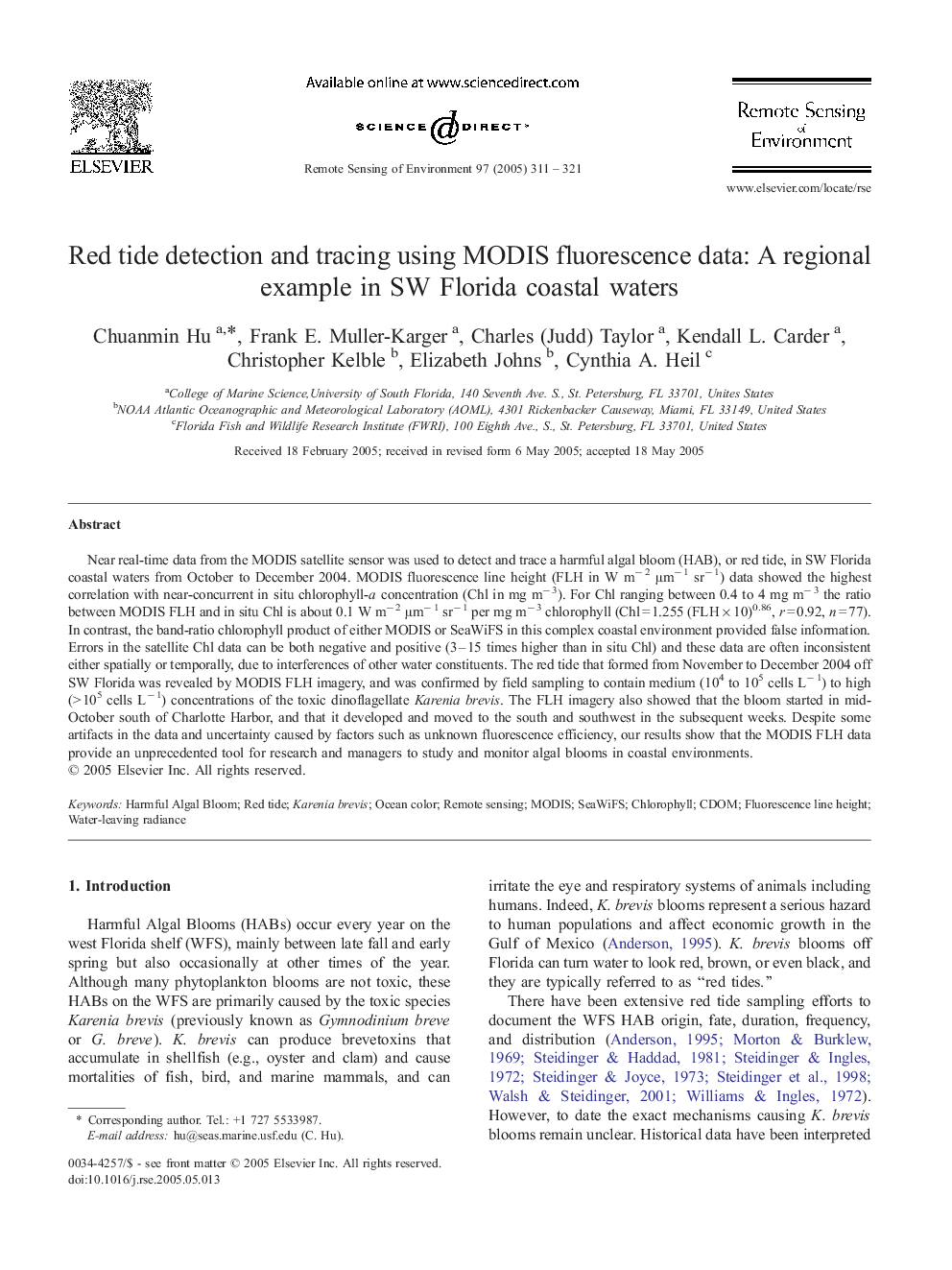| Article ID | Journal | Published Year | Pages | File Type |
|---|---|---|---|---|
| 10114138 | Remote Sensing of Environment | 2005 | 11 Pages |
Abstract
Near real-time data from the MODIS satellite sensor was used to detect and trace a harmful algal bloom (HAB), or red tide, in SW Florida coastal waters from October to December 2004. MODIS fluorescence line height (FLH in W mâ 2 μmâ 1 srâ 1) data showed the highest correlation with near-concurrent in situ chlorophyll-a concentration (Chl in mg mâ 3). For Chl ranging between 0.4 to 4 mg mâ 3 the ratio between MODIS FLH and in situ Chl is about 0.1 W mâ 2 μmâ 1 srâ 1 per mg mâ 3 chlorophyll (Chl = 1.255 (FLH Ã 10)0.86, r = 0.92, n = 77). In contrast, the band-ratio chlorophyll product of either MODIS or SeaWiFS in this complex coastal environment provided false information. Errors in the satellite Chl data can be both negative and positive (3-15 times higher than in situ Chl) and these data are often inconsistent either spatially or temporally, due to interferences of other water constituents. The red tide that formed from November to December 2004 off SW Florida was revealed by MODIS FLH imagery, and was confirmed by field sampling to contain medium (104 to 105 cells Lâ 1) to high (> 105 cells Lâ 1) concentrations of the toxic dinoflagellate Karenia brevis. The FLH imagery also showed that the bloom started in mid-October south of Charlotte Harbor, and that it developed and moved to the south and southwest in the subsequent weeks. Despite some artifacts in the data and uncertainty caused by factors such as unknown fluorescence efficiency, our results show that the MODIS FLH data provide an unprecedented tool for research and managers to study and monitor algal blooms in coastal environments.
Keywords
Related Topics
Physical Sciences and Engineering
Earth and Planetary Sciences
Computers in Earth Sciences
Authors
Chuanmin Hu, Frank E. Muller-Karger, Charles (Judd) Taylor, Kendall L. Carder, Christopher Kelble, Elizabeth Johns, Cynthia A. Heil,
